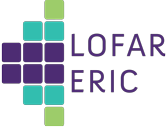Speaker
Description
How AGN feedback operates is one of the unsolved mysteries plaguing modern day astronomy. AGN outflows could explain how this feedback operates and, to investigate this, we use the [OIII] emission line as a tracer of ionised outflows. [OIII] emission has also been connected to the presence of radio emission and with radio surveys deeper than ever before, we can ask: What physical process causes the connection between [OIII] and radio emission? Can we determine further details about how feedback works by understanding the processes which generate radio emission?
A uniquely valuable instrument which can guide us closer to the answer is the International LOFAR Telescope (ILT). Using the LOFAR Two-meter Sky Survey Deep Fields, I compare the [OIII] outflow properties and kinematics of 74 radio detected AGN at z < 0.83 to 47 radio non-detected AGN. We discover that 71% of radio detected AGN host an outflow compared to 56% of radio non-detected AGN, indicating that radio detected AGN are more likely to host an [OIII] outflow compared to radio non-detected AGN. We observe differences in the broad, blueshifted component of [OIII] between the two populations, with the radio detected sources having stronger components. This implies that the radio emission is somehow linked to the outflows in these AGN.
To determine the origin of the radio emission, we perform widefield VLBI (Very Long Baseline Interferometry) processing and imaging by incorporating the international stations of the ILT into the data reduction process. This provides morphological information and allows measurement of the brightness temperatures so that AGN cores can be identified. To conclude this talk, I will present the first high-resolution image at 144 MHz of the Boötes Deep Field.

